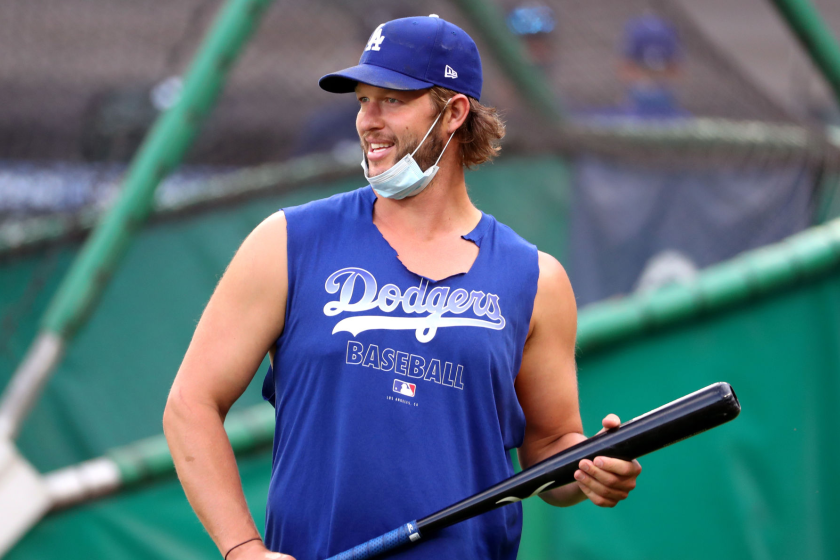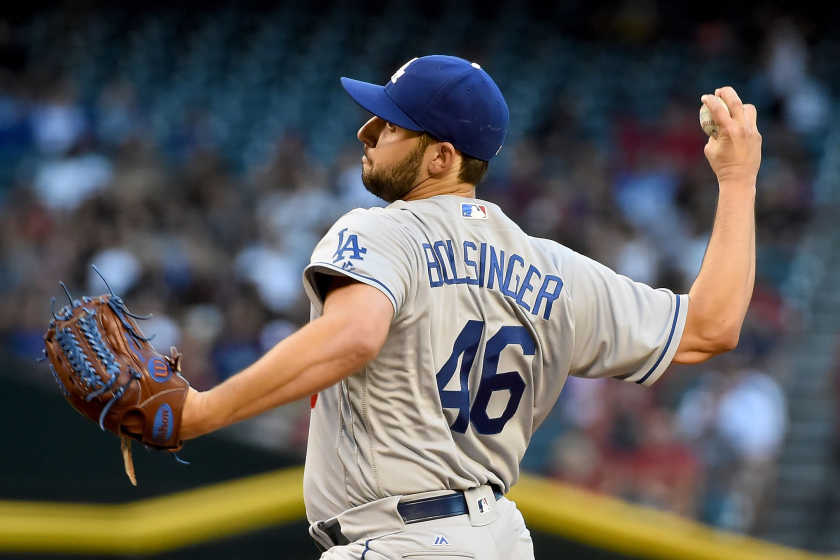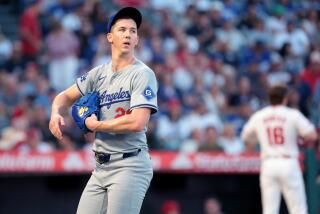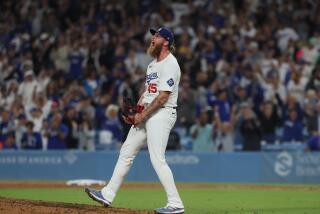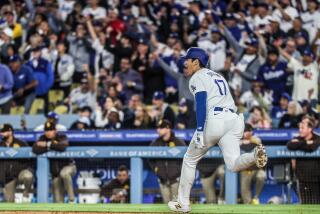How the 2019 Julio Urías experiment could factor into Dodgers’ pitching strategy
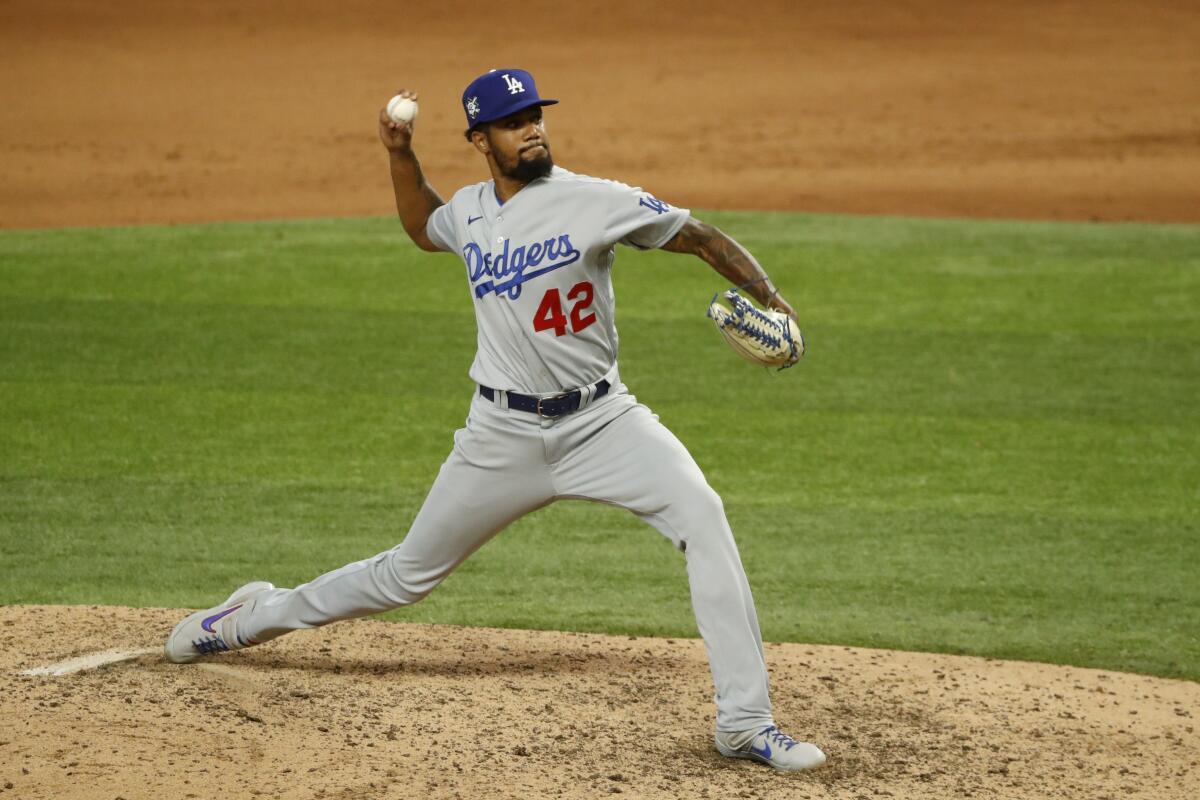
- Share via
SCOTTSDALE, Ariz. — The Dodgers were right around the midpoint in their Cactus League schedule Sunday when Dodgers manager Dave Roberts was asked who has caught his eye this spring.
Roberts mentioned the cluster of young players the Dodgers have drafted in recent years without naming names. Then he specified two older players primed to contribute in the big leagues this year: right-handers Tony Gonsolin and Dennis Santana.
Gonsolin, 26, would be a lock for most starting rotations across the majors while the 24-year-old Santana would at least contend for a spot on most other clubs. Both have been dominant in Cactus League games, combining for 10 scoreless innings in seven appearances. But the Dodgers boast perhaps the deepest starting pitching depth in baseball, so their roles are unclear.
The answer could be unconventional.
In 2019, in an attempt to simultaneously limit Julio Urías’ workload and maximize his impact during the regular season, the Dodgers created an unusual role for him. When he didn’t make spot starts, Urías was used as a reliever every few days for a few innings at a time. He was a starter in mini-doses.
National League pitchers must hit this season after not doing so in 2020. Dodgers starters have had almost zero success with the bat in their careers.
It was not a seamless exercise. Implementation required careful planning and effectively left the Dodgers one reliever short some days. But it worked. The Dodgers won 106 games and Urías was unleashed as a conventional reliever in the playoffs.
Two years later, the experiment could serve as a template for the Dodgers’ pitching plans in 2021, at least to start the season, to incorporate their surplus of major league-ready starting pitchers.
Signing Trevor Bauer increased the Dodgers’ number of viable starting pitchers entering spring training to seven — Bauer, Clayton Kershaw, Walker Buehler, David Price, Urías, Dustin May, and Gonsolin. Two more have made their cases for inclusion in recent weeks: Santana and Jimmy Nelson.
The only way to incorporate them all on regular rest is to have some pitch three or four innings at a time, piggybacking starters. Last week, Roberts indicated that the scheme is being considered.
“It would take a little navigating,” Roberts said. “But I will say that it’s possible.”
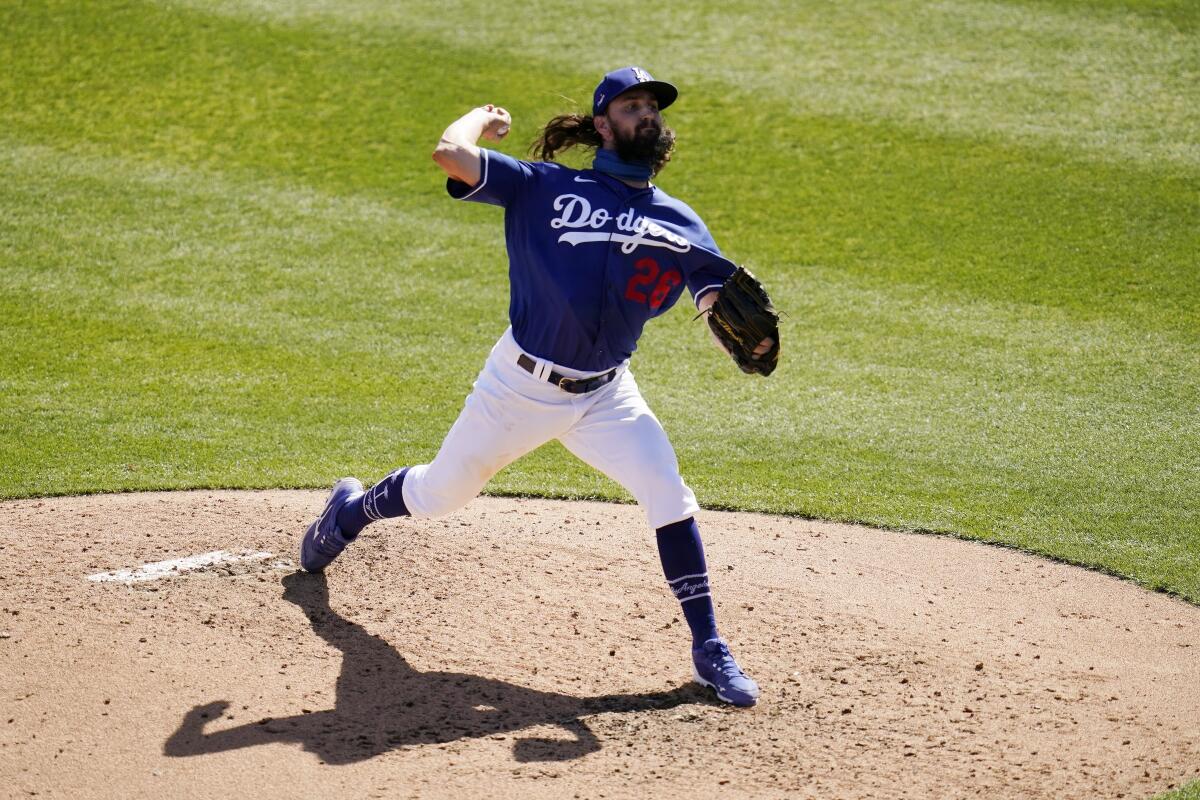
The strategy could help limit the possibility of overusing pitchers as they return to a 162-game slate after a truncated 60-game scheduled last year. Roberts added another factor to the Dodgers’ decision-making: their early schedule. The club will begin the season against the Colorado Rockies at Coors Field, where pitching staffs go to wither in the thin air, before flipping to American League rules against the Oakland Athletics.
The combination of the hitters’ haven and playing with a DH in the season’s first seven games renders having multiple starting pitchers in the bullpen more viable. It could go even further; Roberts noted that the Dodgers have three more series scheduled in AL ballparks through May.
“That definitely helps because then you don’t have to worry about replacing the relief pitcher for a hitter to keep them built up,” Roberts said. “So, it could take a little gymnastics, but it’s certainly possible.”
In a pre-COVID-19 world, the Dodgers would’ve had the option to send a few pitchers to triple A to begin the season, but the minor league campaign has been delayed until May. Instead, players on the cusp of the majors will report to the team’s alternate training site to stay sharp.
“The value that we have in the pitching, it’s our job to make sure that we tap into that,” Roberts said. “And it doesn’t necessarily need to be ideal as far as how we use guys taking in the fact that we have a lot of good players that we got to keep involved and built up.”
The Houston Astros shelled Mike Bolsinger in 2017 while banging on trash cans. He hasn’t pitched since and it doesn’t appear his lawsuit is gaining traction.
In addition to Urías, May and Gonsolin have experience in unusual roles and bouncing back and forth between the bullpen and rotation. Most recently, both were used as openers and relievers in the postseason.
Price is a former Cy Young Award winner making $32 million this season, but he said he’s open to pitching out of the bullpen. As is Nelson, who was dominant for stretches with the Milwaukee Brewers in 2017 before injuries derailed his career. Nelson on Sunday retired six of the seven batters he faced in two scoreless innings. He hasn’t given up a run in five innings this spring.
“I’ll do any role they want me to do,” said Nelson, a non-roster invitee whose minor league contract includes an opt-out on an undisclosed date. “I don’t think it’ll be an issue physically. I just want to pitch and help us win. Whatever role that is, I’m open to anything.”
The answer could be an unorthodox solution to a problem clubs dream about.
More to Read
Are you a true-blue fan?
Get our Dodgers Dugout newsletter for insights, news and much more.
You may occasionally receive promotional content from the Los Angeles Times.

